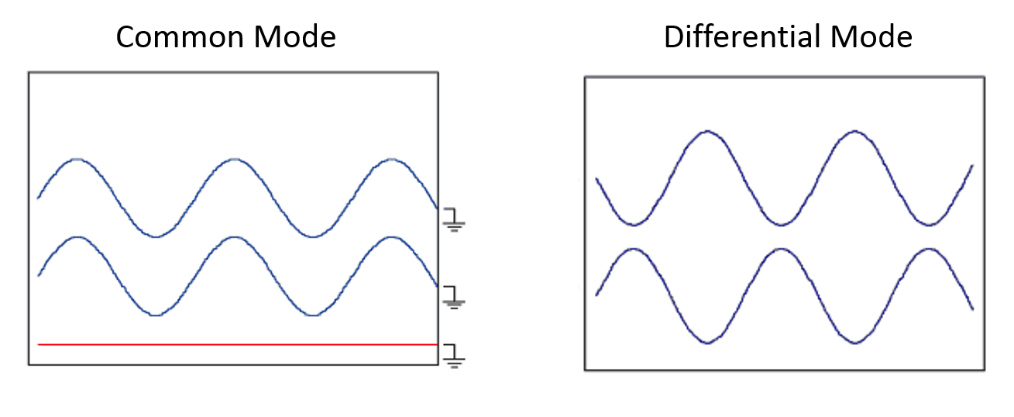101 Series: Understanding Copper Cabling’s Balancing Act
April 26, 2017 / 101 learning
![]() You have likely heard copper network cabling referred to as balanced twisted-pair copper cabling, and maybe you’ve heard of the testing parameter referred to as DC resistance unbalance. But what does all this balance-related terminology really mean, and why should you care?
You have likely heard copper network cabling referred to as balanced twisted-pair copper cabling, and maybe you’ve heard of the testing parameter referred to as DC resistance unbalance. But what does all this balance-related terminology really mean, and why should you care?
It’s All About Balance
Electrical signals travel in one of two modes – common mode or differential mode. Differential mode is considered “balanced” where the signal travels over two conductors in reference to each other, essentially travelling in opposite forces. In contrast, common mode, or unbalanced, signals travel simultaneously and are referenced to ground.
Because balanced cables carry signals that reference each other, they typically feature a symmetrical design, like the twisted pairs you see in a network cable. Unbalanced cables include those where the conductors share a common axis like coax cable. Note – it’s important to understand that DC power and electromagnetic noise from external sources is injected into the cable in common mode.
When common mode noise is coupled onto two conductors in a perfectly balanced twisted-pair, the balanced design cancels out the signal to achieve noise immunity. However, balanced twisted-pair cables are never “perfectly” balanced, which is why we have performance parameters for balance as specified in industry standards.
The PoE Conundrum
So now that you hopefully understand the difference between common (unbalanced) and differential (balanced) mode, let’s look at how this relates to transmitting DC power over twisted-pair cabling in Power over Ethernet (PoE) applications.
When power is delivered simultaneously with data in 4-pair applications, the power is transmitted as a common-mode voltage that is equally split between each conductor of the pair. Here is where balance plays a role again.
If the DC resistance of each conductor in the pair is perfectly equal, there is no difference in resistance. This is what allows the common-mode voltage of the power to be evenly split. Too much difference in resistance can distort the data signals, causing errors, retransmits and even non-functioning data links. Again, achieving perfect balance is impossible, and that is why we also have performance parameters for this type of balance as well.
Disrupting the Balance
So what causes all this imbalance that can adversely impact data signals? Unbalance can be caused by poor workmanship, inconsistent terminations and subpar cable quality.
Practices such as ensuring minimum bend radius and maintaining pair twist as close to the point of termination as possible are key to maintaining balance. And when it comes to preventing DC resistance unbalance in PoE applications, consistency in individual conductor terminations is critical.
The overall quality and maintaining proper physical geometry of the cable is also critical to maintaining balance. When a poor-quality cable exhibits variations in the diameter, concentricity (roundness), contour and smoothness of the copper conductors, there is a higher risk for unbalance.
Testing for It
When it comes to cable certification for maintaining proper balance to minimize noise interference, mode conversion is the concern. This phenomenon happens when a cable is not balanced and noise injected into the cable in common mode causes the voltages to be unequal and degrades network performance.
The two standards-based mode conversion parameters that indicate balance are Transverse Conversion Loss (TCL) and Equal Level Transverse Conversion Transfer Loss (ELTCTL), which are measured by injecting a differential mode signal and then measuring the common mode signal within a pair. For both parameters, the smaller the common mode signal, the better the balance.
When it comes testing differences in resistance, DC resistance unbalance is the concern and industry standards specify a maximum DC resistance unbalance between conductors. This verifies that both conductors in a pair have equal enough resistance to enable the common-mode current needed to effectively support PoE and avoid distortion of the data signals transmitting on the same pair.
Thankfully, DSX CableAnalyzer has ability to measure both differential and common mode signals, means that it is capable of verifying both types of balance through mode conversion testing and dc resistance unbalance testing. And as data speeds advance, and more PoE devices deliver power simultaneously with data, verifying balance is becoming more important than ever.





